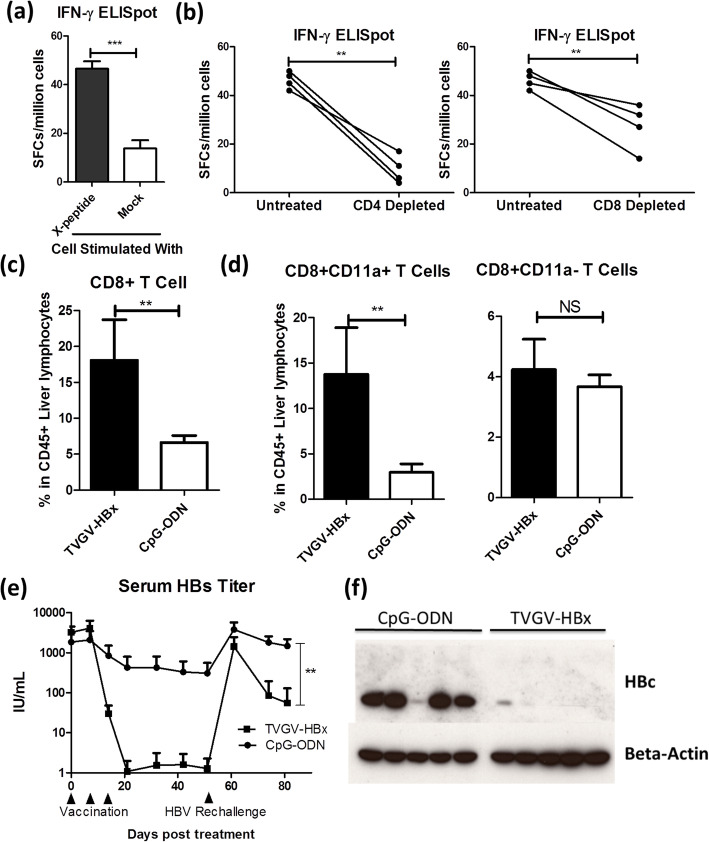Fig. 3.
TVGV-HBx induces an HBx-specific T cell response and posttreatment immune memory in HBV carrier mice. a-b HBV carrier mice (N = 4) received TVGV-HBx on days 0, 7 and 14. Splenocytes were isolated at day 21 and subjected to ex vivo CD4+ or CD8+ T cell depletion or left untreated. Splenocyte preparations were subjected to 15-mer overlapping HBx peptide-stimulated IFN-γ ELISpot assays. a Normalized spot counts of untreated splenocytes. b Pairwise comparative results for untreated splenocytes versus CD4+ cell- or CD8+ cell-depleted splenocytes. c-d HBV carrier mice (N = 3 ~ 4) received TVGV-HBx or CpG-ODN alone on days 0 and 7. Intrahepatic lymphocytes were isolated on day 10. Isolated cells were analyzed by flow cytometry to evaluate T cell subpopulations. c Frequency of liver CD8+ T cells among total CD45+ intrahepatic lymphocytes. d Frequency of liver CD11a+CD8+ and CD11a−CD8+ T cells among CD45+ intrahepatic lymphocytes. e-f HBV carrier mice (N = 5) were immunized with TVGV-HBx or CpG-ODN on days 0, 7 and 14 and rechallenged with HDI of 10 μg of pAAV/HBV1.2 plasmid on day 53. Blood samples were collected at the time points indicated on the plots, and liver samples were collected on day 84. e Serum HBs titer were determined. f Liver HBc was detected by western blotting. Statistics: Student’s t-test. **, p < 0.01; ***, p < 0.001; NS, not significant; SFCs, spot-forming cells

